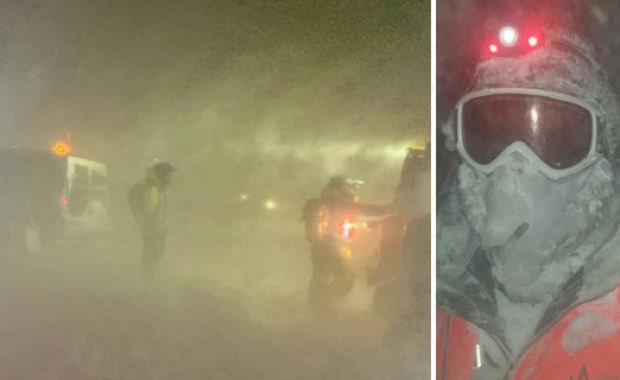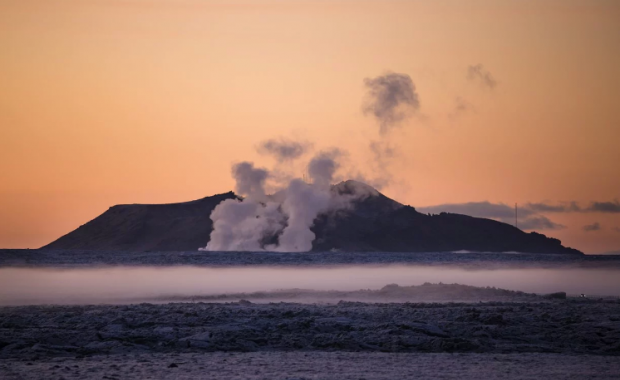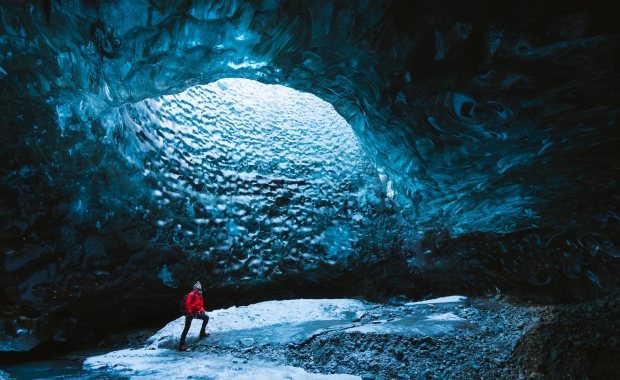1. The Golden Circle
The most popular day trip from Reykjavík is the Golden Circle. Taking you to some of the most picturesque spots in South Iceland the Golden Circle offers a you a panorama of Icelandic landscape and natural beauty. Most tour operators in Reykjavík offer Golden Circle tours, or you can self-drive the route, taking detours or stopping to take photos and enjoy the scenery along the route.
Þingvellir National Park
The first stop on the Golden Circle is Þingvellir. This historical area is only a forty-minute drive from Reykjavík – which leaves you with plenty of time to spend exploring. This is where the Alþingi parliament was established in 930 and it remained there until 1798.

Þingvellir is also uniquely located between the European and North American tectonic plates – the rift is visible in a vertical canyon called Almannagjá. The very adventurous can touch Europe and North America at the same time while scuba-diving in Silfra fissure. Keep in mind that every year, the plates drift about 2 centimeters (0.8 inches) apart.
Read more: 9 essential things to know about Þingvellir National Park
Gullfoss and Geysir
Gullfoss waterfall and the Geysir geothermal area are among Iceland‘s most popular tourist hot spots and are situated only a short hour and a half-long drive from Reykjavík.

When you first approach Gullfoss the crevice is obscured from view, so it is as if the waterfall falls into the Earth, and not into Hvítá river. It’s big, it’s loud and it’s worth checking-out.
Geysir, as the name suggests, is a geyser. The name ‘geyser’ in English, actually derives from the Icelandic word Geysir. The geyser you will see erupt into the sky is, however, not the famous Geysir, but one called Strokkur. It erupts every few minutes to heights of up to 30 meters (98 feet).
2. Reykjanes Peninsula
Despite its close proximity to the Icelandic capital, the Reykjanes peninsula is still somewhat undiscovered land for many. Reykjanes is home to Keflavík International Airport, the main gateway to Iceland, and the legendary Blue Lagoon.

But that’s not all! Reykjanes is also home to the beautiful Gunnuhver geothermal area, an interesting Viking Museum, and the iconic Reykjanesviti lighthouse – Iceland’s first lighthouse. The original lighthouse was built in 1878 but was severely damaged during a large earthquake that struck in 1887. The current lighthouse was built on safer grounds in 1907. Large clouds of steam from the geothermal fields nearby bring added drama to the surroundings.

Reykjanesviti The dreamlike desolate landscapes of Reykjanes. Photo Courtesy of Visit Reykjanes
The main attraction of Reykjanes is its desolate beauty. The rugged lavafields, volcanic craters and the dramatic seaside cliffs are just as stunning in rain and the howling wind coming in from the Atlantic, or on a sunny summer's day. The geothermal areas at Gunnuhver or Krýsuvík are smaller than the Geysir area, but you are also far less likely to meet a flotilla of tour buses bringing crowds of other travelers!
Read more: Reykjanes Geopark: A volcanic wonderland less than an hour’s drive from Reykjavík
3. Akranes and West Iceland
A trip to West Iceland is another option. The small fishing village of Akranes is located 48 kilometres (29 miles) north of Reykjavík and makes for a great day-trip.

The gorgeous Akranes lighthouse, built in 1918, is located in the oldest part of town and was opened for the public a couple of years ago. The panoramic view from the top is simply stunning. Another place of interest is the Akranes Museum Centre where one can learn more about the history of the town’s fishing industry. After exploring the town’s many sights, one can visit Restaurant Galito and try their famous steak-sandwich.

Hraunfossar A chain of pretty waterfalls which emerge from beneath the lava. Photo/Vilhelm
From Akranes you can continue to Glanni waterfall and Grábrók crater near the small university village of Bifröst, or head to Húsafell, one of the hidden gems of Iceland.
Read more: Húsafell in W. Iceland is a Hidden Gem according to Forbes Magazine
Make sure you don't skip Hraunfossar, one of the most beautiful waterfall in all of Iceland.
4. Hvalfjörður fjord
The scenic Hvalfjörður fjord is located just to the north of Reykjavík – a short forty minute drive from the city centre – and is full of interesting spots to visit.

Glymur in Botnsá river. Photo/Andreas Tille, Creative Commons
Those travelling with children are advised to stop by at Bjarteyjarsandur farm to visit the farm animals (they have goats, pigs, sheep and hens) and dine at the farm’s cosy family-run café. The family also offers guided tours around the area.
Whether you are an avid hiker, casual walker or simply a nature-lover, you are sure to enjoy the walk along Álftaskarðsá river to the top of Álftaskarðsþúfa. From there you can enjoy a breath-taking panoramic view over the fjord. Or you can hike up to Glymur waterfall in Botnsdalur valley. It’s the highest waterfall in Iceland, with a cascade of 196 meters (643 feet).
There is no need to fret should you only have a limited amount of time to spend in Iceland as there is a plethora of exciting day-trip options from Reykjavík. One does not have to travel far to experience the true beauty of Icelandic nature.
To give you some ideas, here are four day trip options from Reykjavík.
1. The Golden Circle
The most popular day trip from Reykjavík is the Golden Circle. Taking you to some of the most picturesque spots in South Iceland the Golden Circle offers a you a panorama of Icelandic landscape and natural beauty. Most tour operators in Reykjavík offer Golden Circle tours, or you can self-drive the route, taking detours or stopping to take photos and enjoy the scenery along the route.
Þingvellir National Park
The first stop on the Golden Circle is Þingvellir. This historical area is only a forty-minute drive from Reykjavík – which leaves you with plenty of time to spend exploring. This is where the Alþingi parliament was established in 930 and it remained there until 1798.

Þingvellir is also uniquely located between the European and North American tectonic plates – the rift is visible in a vertical canyon called Almannagjá. The very adventurous can touch Europe and North America at the same time while scuba-diving in Silfra fissure. Keep in mind that every year, the plates drift about 2 centimeters (0.8 inches) apart.
Read more: 9 essential things to know about Þingvellir National Park
Gullfoss and Geysir
Gullfoss waterfall and the Geysir geothermal area are among Iceland‘s most popular tourist hot spots and are situated only a short hour and a half-long drive from Reykjavík.

When you first approach Gullfoss the crevice is obscured from view, so it is as if the waterfall falls into the Earth, and not into Hvítá river. It’s big, it’s loud and it’s worth checking-out.
Geysir, as the name suggests, is a geyser. The name ‘geyser’ in English, actually derives from the Icelandic word Geysir. The geyser you will see erupt into the sky is, however, not the famous Geysir, but one called Strokkur. It erupts every few minutes to heights of up to 30 meters (98 feet).
2. Reykjanes Peninsula
Despite its close proximity to the Icelandic capital, the Reykjanes peninsula is still somewhat undiscovered land for many. Reykjanes is home to Keflavík International Airport, the main gateway to Iceland, and the legendary Blue Lagoon.

But that’s not all! Reykjanes is also home to the beautiful Gunnuhver geothermal area, an interesting Viking Museum, and the iconic Reykjanesviti lighthouse – Iceland’s first lighthouse. The original lighthouse was built in 1878 but was severely damaged during a large earthquake that struck in 1887. The current lighthouse was built on safer grounds in 1907. Large clouds of steam from the geothermal fields nearby bring added drama to the surroundings.
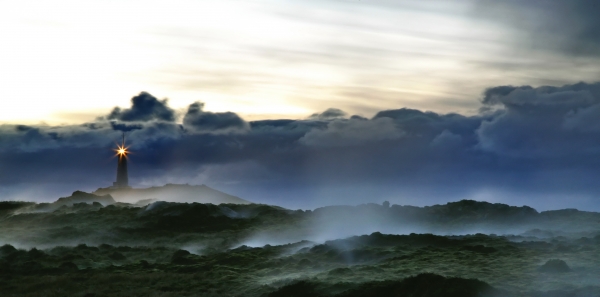
Reykjanesviti The dreamlike desolate landscapes of Reykjanes. Photo Courtesy of Visit Reykjanes
The main attraction of Reykjanes is its desolate beauty. The rugged lavafields, volcanic craters and the dramatic seaside cliffs are just as stunning in rain and the howling wind coming in from the Atlantic, or on a sunny summer's day. The geothermal areas at Gunnuhver or Krýsuvík are smaller than the Geysir area, but you are also far less likely to meet a flotilla of tour buses bringing crowds of other travelers!
Read more: Reykjanes Geopark: A volcanic wonderland less than an hour’s drive from Reykjavík
3. Akranes and West Iceland
A trip to West Iceland is another option. The small fishing village of Akranes is located 48 kilometres (29 miles) north of Reykjavík and makes for a great day-trip.

The gorgeous Akranes lighthouse, built in 1918, is located in the oldest part of town and was opened for the public a couple of years ago. The panoramic view from the top is simply stunning. Another place of interest is the Akranes Museum Centre where one can learn more about the history of the town’s fishing industry. After exploring the town’s many sights, one can visit Restaurant Galito and try their famous steak-sandwich.
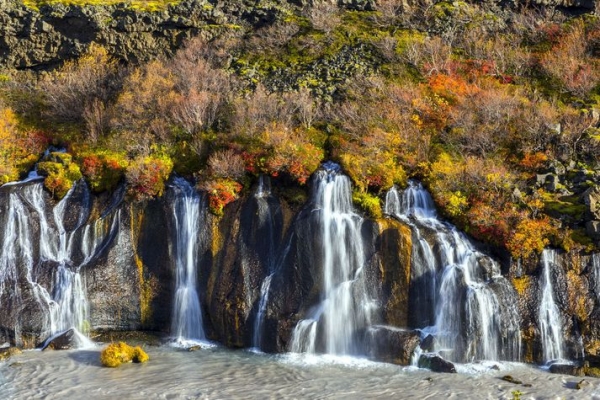
Hraunfossar A chain of pretty waterfalls which emerge from beneath the lava. Photo/Vilhelm
From Akranes you can continue to Glanni waterfall and Grábrók crater near the small university village of Bifröst, or head to Húsafell, one of the hidden gems of Iceland.
Read more: Húsafell in W. Iceland is a Hidden Gem according to Forbes Magazine
Make sure you don't skip Hraunfossar, one of the most beautiful waterfall in all of Iceland.
4. Hvalfjörður fjord
The scenic Hvalfjörður fjord is located just to the north of Reykjavík – a short forty minute drive from the city centre – and is full of interesting spots to visit.
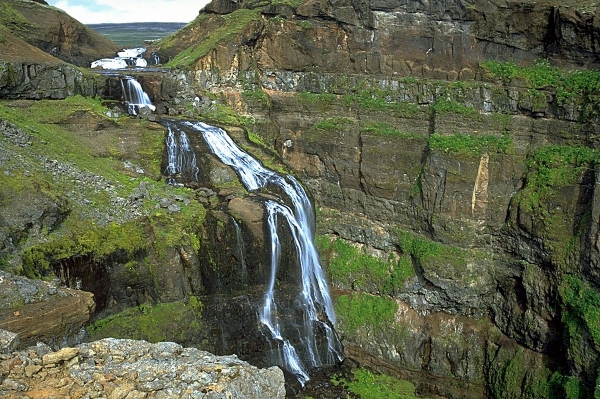
Glymur in Botnsá river. Photo/Andreas Tille, Creative Commons
Those travelling with children are advised to stop by at Bjarteyjarsandur farm to visit the farm animals (they have goats, pigs, sheep and hens) and dine at the farm’s cosy family-run café. The family also offers guided tours around the area.
Whether you are an avid hiker, casual walker or simply a nature-lover, you are sure to enjoy the walk along Álftaskarðsá river to the top of Álftaskarðsþúfa. From there you can enjoy a breath-taking panoramic view over the fjord. Or you can hike up to Glymur waterfall in Botnsdalur valley. It’s the highest waterfall in Iceland, with a cascade of 196 meters (643 feet).




